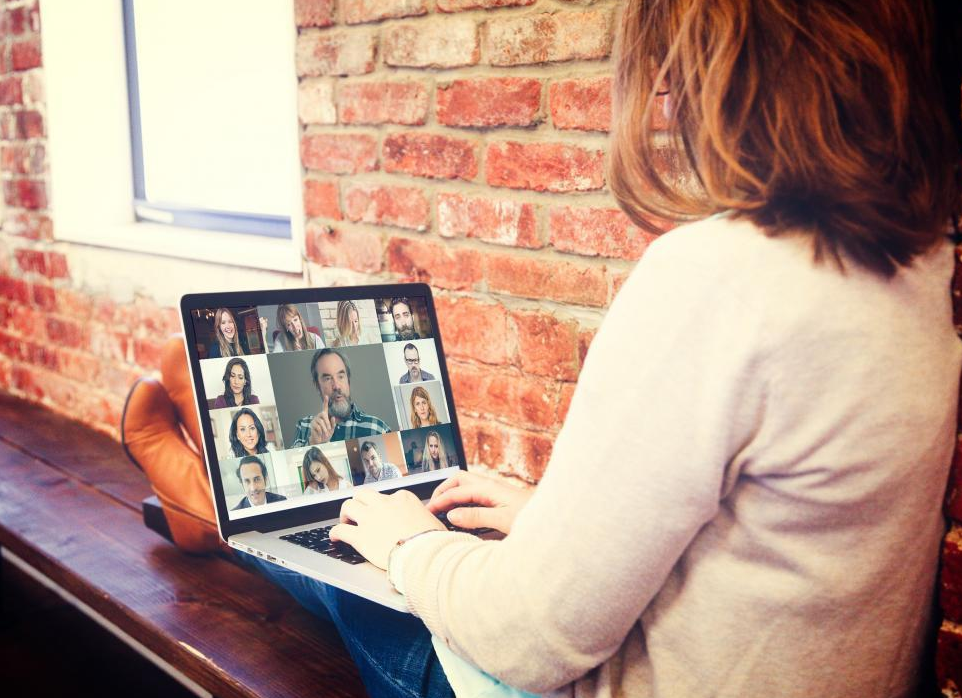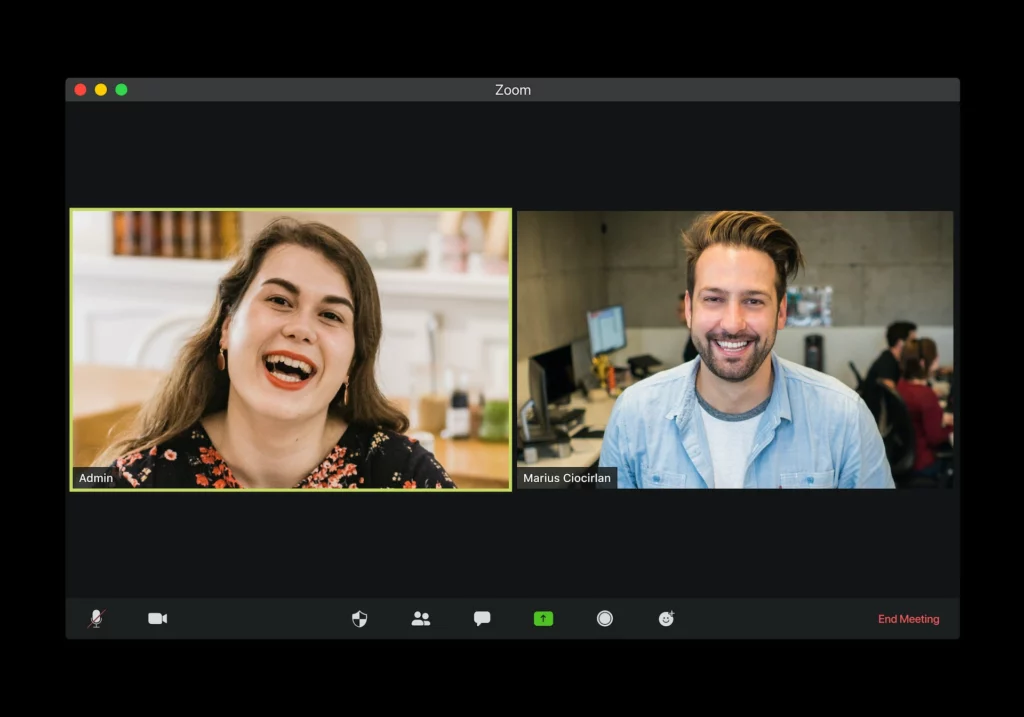The rise of virtual events has been phenomenal recently, thanks to their unparalleled comfort and versatility. With technological advancements, virtual gatherings have become a preferred means of connecting and participating in events from the comfort of one’s abode.
This article delves into 8 innovative ways to elevate your virtual event, making it a memorably immersive experience for your participants. From captivating interactive sessions to fostering a sense of community, this article encompasses all critical aspects for ensuring the success of your virtual event, be it a conference, trade show, or product launch. These tips will guarantee a memorable event and make it highly impactful.
Interactive Elements
By infusing interactivity into your virtual gatherings, you can elevate engagement with the content, transforming a boring lecture-style presentation into a dynamic and interactive experience. Live polls and quizzes are excellent interactive elements to include in your virtual events.
Live polls offer a real-time, innovative way to gather opinions and thoughts from attendees. The host can engage the audience by posing a question with multiple response choices, making the presentation more fascinating and receiving insightful feedback.
Quizzes, on the other hand, are a tool to assess the comprehension of the material by the participants. These quizzes help retain the essential information from the presentation, foster active learning, and add a playful touch to the virtual gathering.

Incorporating interactive features like live polls and quizzes in virtual events has several advantages. It sustains the participants’ attention and engagement, allowing them to participate in the meeting actively, and it builds a community among the attendees as they work collaboratively to answer questions and participate in the polls.
Including interactive elements in virtual events makes the experience more memorable and engaging for the attendees and provides a valuable opportunity for the presenter and the attendees to exchange ideas, gather feedback, and contribute to a more exciting and productive meeting.
Gamification
Gamification is the integration of game design elements into non-gaming situations to enhance user engagement. In virtual events, gamification techniques can elevate attendee involvement, foster a community-like atmosphere, and create an unforgettable experience.
There are various ways to blend gamification into virtual events seamlessly. For instance, you can launch interactive games and challenges that motivate attendees to participate and engage with their peers. One such example could be a virtual treasure hunt where participants have to find specific items within the virtual event platform.

Another exciting prospect could be a virtual contest that tests attendees’ knowledge and enables them to compete against each other in real-time.
You can also incorporate gamification elements into your sessions to increase their interactivity. Using quizzes, live polls, and leaderboards can inject a competitive spirit and make the content more engaging.
Using gamification elements can convert a boring virtual event into a fun and memorable experience. By fostering participation and interaction, the virtual event will become more engaging and leave a lasting impression on the attendees.
Personalized Experiences
Crafting unique and customized virtual experiences for each attendee, tailored to their preferences and characteristics, is the essence of Personalization. Event organizers can use data and technology to design engaging experiences that enhance attendee satisfaction and strengthen the connection between attendees and the event’s purpose.
Through collecting information about each attendee’s interests, background, and behaviours, event organizers can then utilize the knowledge to design and deliver targeted experiences by creating network opportunities through specific breakout rooms or personalizing attendee agendas.
Gamification elements such as leaderboards, quizzes, and rewards systems can increase attendee participation and engagement, making the virtual event experience more impactful and enjoyable.
The personalized approach to virtual events can deliver a more engaging, relevant, and memorable experience for attendees. By crafting unique experiences for each attendee, event organizers can elevate attendee satisfaction and strengthen the connection between attendees and the event’s objectives.
Networking Opportunities
With the advancement of technology, virtual events present a unique opportunity to facilitate connection and networking among attendees, fostering a sense of inclusivity and collaboration.
Using features such as live Q&A sessions, discussion forums, and virtual exhibitor halls, attendees can engage with one another in real-time, bridging gaps and fostering meaningful connections.

AI-powered matchmaking algorithms can offer personalized recommendations and virtual networking opportunities based on attendees’ professional goals, interests, and expertise. This can help create a successful and engaging virtual event experience by fostering a sense of community among attendees.
High-Quality Production Value
The appearance of a virtual event is a crucial factor in determining its overall impact and level of professionalism. A virtual event’s A/V and design contribute to its potential broad appeal. Investing in superior equipment and production techniques is imperative to creating a captivating virtual experience.
Using high-quality audio and video equipment, event organizers can guarantee attendees a crisp and vivid virtual experience while a high-bandwidth and consistent internet connection eliminate the hindrances of buffering and lagging.
To create an attractive and visually appealing virtual environment, event organizers must give serious consideration to the graphics, animations, and virtual backgrounds used.
The flow of the event, and the movement of attendees between different virtual spaces and sessions, are also integral to virtual event design.
Incorporating Real-Life Experiences
The use of experiences in virtual gatherings refers to the infusion of physical-world components into the digital realm to foster a more engaging and immersive event experience for attendees.
Integrating live musical acts or performances, hands-on exhibits, and activities that imitate real-life experiences can elevate virtual events, provide attendees with excitement and engagement, and foster a sense of connection and community among attendees.

With interactive events the organizer must be set up to deliver the guest with a physical good before the event. Cooking lessons, wine, beer, spirits tasting, and crafting are just a few examples of how people have enhanced their events with hands-on activities. By allowing attendees to interact with and explore products and services within a virtual setting, event organizers can provide a similar experience to an in-person event, and many attendees prefer the convenience of these types of events.
Real-life elements, such as networking prospects, social events, and recreation activities, can foster a sense of community among attendees. This can include virtual happy hours, gaming tournaments, or fitness classes, which can encourage attendees to connect and build relationships through enjoyable and interactive means.
Integrating tangible experiences into virtual events is a means to elevate the attendee experience and cultivate a more engaging and immersive virtual environment.
By bringing elements of the physical world, such as live musical acts or performances, interactive exhibits, and real-life activities, into virtual events, event organizers can create a virtual gathering that is as close to an in-person event as possible.
This increases attendee engagement, fosters a sense of community, and positively impacts the event’s brand and reputation.
Anticipating Technical Issues
Technical difficulties are inevitable in virtual events, and proper preparation is key to overcoming them with grace. To ensure the seamless conduct of virtual events, event organizers must take proactive measures to be ready for technical issues that may arise. Event organizers should work with their technical team to formulate contingency plans and be ready to resolve any issues in real-time.
When technical difficulties do occur, event organizers should remain composed and communicate effectively with attendees. Keeping attendees updated with transparent and prompt responses to their concerns can bolster trust and sustain engagement levels.
In some instances, technical difficulties can be leveraged as opportunities to showcase the adaptability and robustness of the event and its organizers. By demonstrating an ability to overcome technical obstacles and maintain the event’s flow, organizers can demonstrate their dedication to providing an excellent and captivating experience for attendees.
Technical difficulties are an intrinsic aspect of all events, not just virtual ones. By preparing for and addressing technical issues effectively, organizers can foster a positive experience for attendees, maintain trust and engagement, and elevate the overall outcome of the event.
Measuring Success
Evaluating the outcome of a virtual event is vital in elevating its level of excellence. Defining specific objectives beforehand lays the foundation for determining the event’s success. Through measuring success, event organizers can pinpoint areas for advancement and make informed decisions to enhance the overall attendee experience.
Metrics like participation, screen time, chat usage, and direct feedback are tools for measuring success, and your platform may have many of these built rights in. If it doesn’t, you may be able to track most of them via various channels, including online questionnaires, tracking technology, and social media analysis. For instance, tracking technology can be utilized to monitor the duration of time attendees spent on the virtual event platform, the content they interacted with, and the popularity of each session.

Qualitative feedback from attendees also plays a crucial role in measuring success. Post-event surveys, focus groups, or individual conversations can provide a wealth of information regarding the strengths and weaknesses of the virtual event, allowing event organizers to make improvements for future events.
Measuring success is crucial in enhancing virtual events’ quality. By setting clear goals, gathering data and feedback, and using this information to make informed decisions, event organizers can elevate the level of their virtual events and offer a superior experience for attendees.
Also read, Ways Virtual Events are Revolutionizing Corporate Marketing
Conclusion
It’s vital to embrace innovation and pay attention to detail to elevate your virtual event experience and create a lasting impression on attendees. Via implementing interactive elements, personalized experiences, gamification, and incorporating high-quality production value and event design, you’ll create an experience that attendees won’t soon forget.
Preparing to tackle unexpected technical difficulties and measuring success through collecting attendee feedback is crucial in continuously improving the virtual event landscape and elevating the experience for attendees.
In the current fast-paced virtual event industry, elevating the virtual event experience is an indispensable step to establishing a positive brand image and offering an bespoke experience for your audience.
Frequently Asked Questions
How can I make virtual events more interactive?
Leveraging break-out rooms, interactive Q&A sessions, dynamic polls and surveys, playful gamification, collaborative group activities, and engaging user-generated content, among other interactive features like custom virtual backgrounds and expressive emoticons, can enhance the virtual event experience.
Fostering active audience participation, enabling networking opportunities, and encouraging a sense of community among attendees are all crucial components of elevating the virtual event. Ensuring real-time feedback mechanisms, pre-delivering tangible items to the attendee, and citing events that have enhanced their experience, such as cooking lessons, wine/beer/spirits tastings, and crafting workshops. And seamless technical operations are essential for ensuring the success of your virtual event.
What are some ways to incorporate gamification into virtual events?
Incorporate games and challenges into the event, provide awards for participation, create leaderboards, include virtual scavenger hunts, implement team-building activities, use interactive polls and quizzes, points for networking, platform exploration, and add competitiveness with individual and team challenges to sessions. Bonus if the games are relevant and provide value to the event.
How can I personalize the virtual event experience for each attendee?
To customize each attendee’s virtual event journey, gather insights beforehand on their interests, inclinations, and incentives they may have reacted to positively before. Leverage this data to tailor the event format and content to their needs. Elevate the virtual event by incorporating interactive features, gamification, and user-generated content, fostering personalized experiences. Foster meaningful engagement and networking between attendees, continually gather feedback, and utilize it to refine and personalize the experience in future events.
How can I facilitate networking opportunities during virtual events?
To enhance the virtual network, consider implementing features such as break-out sessions, live Q&A, virtual scavenger hunts, team-building games, gamified networking, and real-time chat options. Motivate attendees to interact with each other and foster a sense of community.
How can I improve the production values of my virtual events?
To enhance the production caliber of virtual events, consider elevating the technical aspect. Invest in premium audio-visual gear, incorporate cutting-edge technologies, and collaborate with skilled event designers to fabricate a captivating and engaging digital experience.
How can I design virtual event spaces to be more engaging and memorable?
To craft an attractive virtual event space, think of incorporating interactive elements like virtual backgrounds, motion graphics, lower thirds, emoticons, polls, and gamification, adding creative twists, and minding the obvious: great lighting, video, and sound quality. The aim is to create an experience that captivates the audience and leaves a lasting impact.
How can I bring real-life experiences into virtual events?
To infuse authentic, real-life tangible experiences into your virtual events, consider curating highly interactive, engaging virtual spaces and fostering personal connections through real-time feedback and personalized experiences tailored to each attendee.
How can I handle technical difficulties during virtual events?
To tackle technical troubles during virtual events with ease, establish a backup plan, have a support team ready to assist in real-time, and communicate effectively with attendees to reduce impact. Stay flexible and be prepared to improvise if unexpected obstacles arise while exuding a professional and composed demeanor.
How can I measure the success of my virtual events?
Consider using metrics like attendance, participation, and attendee feedback to evaluate the performance of virtual events. Utilize monitoring tools and online surveys to collect quantitative data. Include qualitative input through post-event surveys, focus groups, and one-on-one conversations to get critical insights into the event’s strengths and problems.






